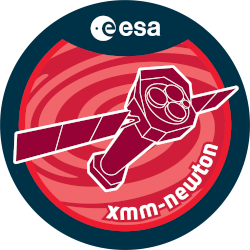

| Proposal ID | 014699 |
| Title | The HX/FIR correlation in the local Universe |
| Download Data Associated to the proposal | https://nxsa.esac.esa.int/nxsa-sl/servlet/data-action-aio?obsno=0146990101 |
| DOI | https://doi.org/10.5270/esa-y19wkwu |
| Principal Investigator, PI | Mr Guido Risaliti |
| Abstract | The contribution of AGNs to the Far Infrared Background is still uncertain, andis strictly related to the understanding of the energy source of ULIRGs.If a significant fraction of ULIRGs is powered by AGNs, these AGNs haveto be both luminous (L(2-10 keV)~ 10^45 erg s^-1) and heavily absorbed in theX-rays. We propose to use the XMM observational capabilities in the hard X-rayto look for these QSO2s in a well defined sample of ULIRGs.We will be able to estimate a stringent lower limit of the AGN contribution toULIRGs and we expect to increase the number of known QSO2s. Comparing the X-rayand the FIR emission of these objects, we will be able to study the correlationbetween the FIR and hard X-ray backgrounds in the near Universe. |
| Publications |
|
| Instrument | EMOS1, EMOS2, EPN, OM, RGS1, RGS2 |
| Temporal Coverage | 2003-04-25T02:45:21Z/2003-05-24T15:34:14Z |
| Version | 17.56_20190403_1200 |
| Mission Description | The European Space Agencys (ESA) X-ray Multi-Mirror Mission (XMM-Newton) was launched by an Ariane 504 on December 10th 1999. XMM-Newton is ESAs second cornerstone of the Horizon 2000 Science Programme. It carries 3 high throughput X-ray telescopes with an unprecedented effective area, and an optical monitor, the first flown on a X-ray observatory. The large collecting area and ability to make long uninterrupted exposures provide highly sensitive observations. Since Earths atmosphere blocks out all X-rays, only a telescope in space can detect and study celestial X-ray sources. The XMM-Newton mission is helping scientists to solve a number of cosmic mysteries, ranging from the enigmatic black holes to the origins of the Universe itself. Observing time on XMM-Newton is being made available to the scientific community, applying for observational periods on a competitive basis. |
| Creator Contact | https://www.cosmos.esa.int/web/xmm-newton/xmm-newton-helpdesk |
| Date Published | 2004-06-14T00:00:00Z |
| Last Update | 2025-01-27 |
| Keywords | "`` qso2s ''", "strictly related", "hard xray backgrounds", "energy source", "hard xray", "luminous l2", "heavily absorbed", "fir emission", "stringent lower limit", "local universe", "XMM", "infrared background", "defined sample", "fir correlation" |
| Publisher And Registrant | European Space Agency |
| Credit Guidelines | European Space Agency, Mr Guido Risaliti, 2004, 'The HX/FIR correlation in the local Universe', 17.56_20190403_1200, European Space Agency, https://doi.org/10.5270/esa-y19wkwu |